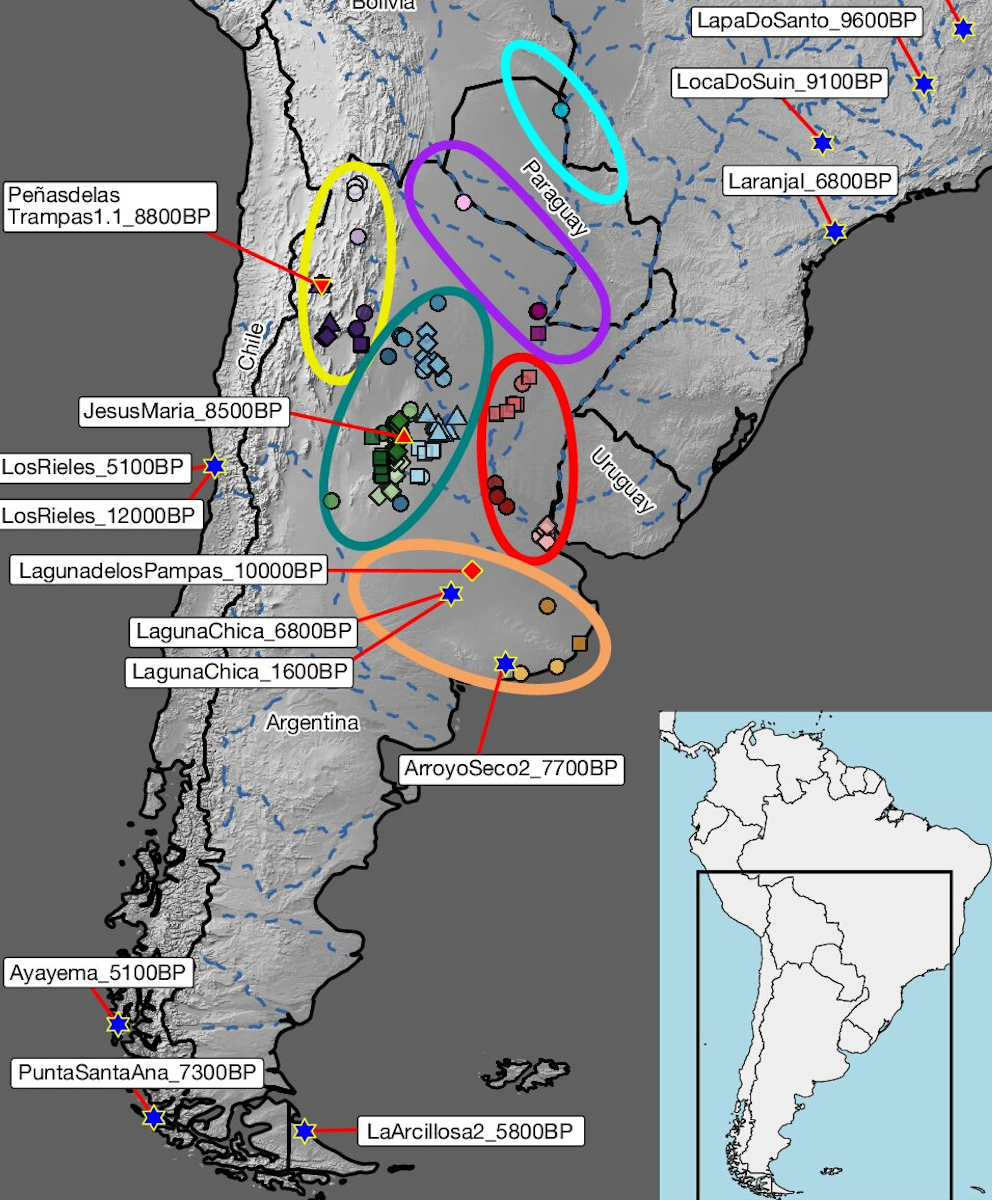- News
- Science
- Archaeology
Scientists says this group rarely intermingled with others
Vishwam SankaranMonday 24 November 2025 10:18 GMTComments
 CloseRelated: How your toes tell the story of human evolution
CloseRelated: How your toes tell the story of human evolution
Sign up for our free Health Check email to receive exclusive analysis on the week in health
Get our free Health Check email
Get our free Health Check email
 Email*SIGN UP
Email*SIGN UPI would like to be emailed about offers, events and updates from The Independent. Read our Privacy notice
Archaeologists have discovered a previously unknown ancient lineage of humans living in Argentina, shedding light on the earliest settlements in one of the world’s last places to be occupied by our species, according to a new study.
As modern humans first emerged in Africa and migrated to different parts of the world, the southern tip of South America was one of the last places to be occupied by the species.
Until now, the oldest evidence of human presence in the region was an archaeological site about 14,000 years old at Arroyo Seco in the Pampas of Argentina.
However, much remains unknown about the first populations to establish settlements in this part of the world.
This is because studies of ancient DNA in South America have lagged behind efforts in Europe and Asia, researchers say.
Previous DNA studies suggest that by 9,000 years ago, Native Americans began differentiating into three identifiable lineages – one in the central Andes, another in the tropical lowlands of Amazonia, and a third to the south in the Pampas, Chile and Patagonia.
The newly discovered human lineage in Argentina endured on the continent for over eight millennia, giving rise to a surprisingly diverse mix of indigenous cultures.
“We found this new lineage, a new group of people we didn’t know about before, that has persisted as the main ancestry component for at least the last 8,000 years up to the present day,” said Javier Maravall López from Harvard University.
“It’s a major episode of the history of the continent that we just weren’t aware of,” said Dr Lopez, an author of the new study published in the journal Nature.
 Ancient human DNA samples were analysed from across the central Southern Cone of South America (Maravall-López et al)
Ancient human DNA samples were analysed from across the central Southern Cone of South America (Maravall-López et al)In the study, researchers assessed DNA from the bones and teeth of 238 indigenous individuals up to 10,000 years old, increasing the number of samples from the central Southern Cone region, consisting of modern-day Argentina, Chile and Uruguay by over 10-fold.
They also compared the data with existing ancient DNA from 588 other indigenous people from across the Americas who lived from 12,000 years ago up to the time of European contact.
Scientists narrowed the comparison to a select small section of the human genome known as single-nucleotide polymorphisms, or SNPs, which vary between humans.
This comparison could help make inferences about genetic relationships among the individuals, and identify which ones shared common ancestry and which were more distantly related.
Researchers found a completely new lineage of humans who appeared by 8,500 years ago in the region.
This lineage of people developed a diverse array of languages and cultures and became the core component of the ancestry of central Argentina, the study found.
“People with the same ancestry, in an archipelago-like fashion, were developing distinctive cultures and languages while being biologically isolated,” Dr Lopez said.
The newly identified central Argentina lineage then expanded to the south and mixed with the Pampas population 3,300 years ago or earlier, eventually becoming the dominant ancestry there, scientists found.
Although the newly found group appears to have intermingled with others, researchers say they mostly kept to themselves.
They hope future studies can explain this lack of migration and mixing between ancient groups in the region.
More about
ArgentinaDNASouth Americahuman evolutionJoin our commenting forum
Join thought-provoking conversations, follow other Independent readers and see their replies
Comments


